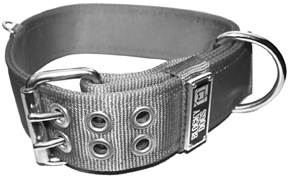Dear readers: In May 2005, we published an article by longtime WDJ writer and book author CJ Puotinen about dietary considerations for dogs with renal failure. Quoted several times in When to Say No to Low-Protein, was dog owner Mary Straus, a researcher who has exhaustively studied the veterinary literature regarding treatments for chronic renal failure (CRF).
In response to our article, we received a long letter from S. Dru Forrester, DVM, MS, Diplomate ACVIM (Small Animal Internal Medicine), a scientific spokesman for Hills Pet Nutrition. Dr. Forrester began his letter with a statement that our article contained inaccurate information, and that some of the recommendations in the article could cause significant harm to dogs suffering from chronic kidney disease.
However, after going through Dr. Forresters letter with a fine-tooth comb, we feel confident that our article contained no errors, but rather, statements that represent different opinions from those of Dr. Forrester and Hills.
We shared Dr. Forresters letter with Mary Straus, as, quite frankly, we needed some help finding and checking the 10 footnoted studies Dr. Forrester referred to in support of his critique of our article. Straus not only had the studies on hand, but also was familiar with them. Shortly after she received Dr. Forresters letter, Straus countered with an even longer letter, citing 30 footnoted references in support of her critique of Dr. Forresters letter.
There is some pretty fascinating stuff in these letters fascinating, at least, to us dog food geeks! In recognition of the fact that not all of our readers may be similarly enthralled, we offer below an edited version of the two letters. Interested individuals can contact us if they are interested in receiving the complete text of both letters.
Hills pioneered the field of clinical veterinary nutrition, and has always been the leader of that new industry. Its founder, a brilliant and visionary veterinarian, Mark L. Morris, Sr., may have been the first modern veterinarian to recognize the therapeutic value of adjusting the diet of animals as part of a veterinary response to their disease; the company was founded on a product he developed in 1939 to treat dogs with kidney failure a product that is still a company best-seller.
We respect Hills history and acknowledge its enormous contributions to the field, but also wish to note that its oldest product (Prescription Diet® Canine k/d®) has changed over the years in response to new developments meaning it might change again, perhaps even to incorporate some of the research we cited in our article. Other companies now make foods for dogs with kidney failure, and the resulting products are not all alike.
When to Say No to Low-Protein expressed our support for some different ideas. We dont believe that Hills currently possesses the only correct prescription for feeding a dog with renal failure, nor the best one.
Nancy Kerns, Editor
Hills Scientific Spokesman Writes…
I discovered several inaccuracies when reading When to Say No to Low-Protein. The article summarizes dietary treatment for chronic renal failure (CRF), now known as chronic kidney disease (CKD), in dogs. The author recommends a new approach to feeding dogs with kidney disease and states that newer research has radically changed and fine-tuned dietary recommendations for canine CKD patients.
Some of the recommendations in the article are appropriate; however, others could cause significant harm to dogs suffering from CKD. The readers of your journal should be aware of this information when making decisions about what to feed their dogs with CKD.
The author is correct that newer research has radically changed and fine-tuned the dietary recommendations for canine CKD patients; however, current recommendations made by veterinary nephrologists contradict those made by the author of this article.
The most current findings available are from a clinical study of dogs with naturally occurring CKD conducted at the University of Minnesota by leading experts in the field of veterinary nephrology…These findings further support current recommendations made by veterinary nephrologists to feed a therapeutic food such as Prescription Diet® Canine k/d® to dogs with CKD. Therapeutic foods such as Prescription Diet® Canine k/d® are indicated before kidney disease becomes severe; they should be fed when serum creatinine concentration is greater than or equal to 2 mg/dl. Waiting until kidney failure is more advanced decreases patient survival time and quality of life and also may decrease acceptability of the therapeutic food.
When calculating dietary protein requirements, one must consider digestibility and quality of the protein source. Digestibility refers to the amount of protein available for absorption and subsequent use by the pet. High quality protein sources deliver essential amino acids, those that cannot be synthesized by the pet.
As the quality and digestibility of the protein source increases, the amount of protein required in pet food decreases. Prescription Diet® Canine k/d® contains proteins that are of high quality and digestibility, therefore, a lesser amount of protein can be used to meet maintenance requirements for dogs.
The role of dietary protein restriction in dogs continues to be debated amongst veterinary nephrologists. To date, studies have not shown a conclusive effect on delaying progression of experimentally induced CKD in dogs; however, there have been beneficial effects observed in dogs with naturally occurring kidney diseases.
It is generally accepted that reducing protein intake decreases blood urea nitrogen (BUN) concentrations and ameliorates clinical signs of uremia in patients with CKD. In addition, restricting dietary protein may help ameliorate effects of metabolic acidosis, common in CKD.
Although further evaluation is needed, dietary protein restriction is associated with reduced magnitude of urine protein loss (i.e., proteinuria) in dogs with glomerular diseases (i.e., kidney diseases characterized by increased permeability of glomerular blood vessels that allow protein leakage into the urine).
Protein supplementation (e.g., meat, eggs, tripe) is contraindicated in these patients because it may worsen severity of proteinuria and subsequent hypoalbuminemia (decreased protein concentration in the blood).
The reader should also be aware that feeding a food with reduced protein is only part of the picture when talking about therapeutic foods such as Prescription Diet® Canine k/d®. Other beneficial components of these foods include moderate phosphate restriction, moderate sodium restriction, increased supplementation with polyunsaturated fatty acids (PUFA), increased B vitamins, and increased buffering capacity (to counteract the tendency toward decreased acid excretion by the kidneys).
In the past, owners of dogs with CKD often found that therapeutic kidney foods were not very palatable. Prescription Diet® Canine k/d® dry and wet formulas have undergone several improvements in palatability during the past several years and most dogs with CKD readily accept these foods.
It is important to slowly transition a dog from the old food to the new therapeutic food over a seven-day period. Dogs with advanced CKD often are nauseated and will not be interested in any type of food. Clinical signs of nausea and vomiting should be controlled before attempting to introduce a new food.
There are no nutritional reasons that support providing excessive amounts of dietary protein; older dogs (> 7 years) do not require more protein than young adults. In fact, subclinical kidney disease may exist in apparently healthy older or geriatric dogs and kidney function can be worsened by feeding excessive protein (and phosphorus) to these patients.
In summary, your readers should be aware that kidney therapeutic foods are routinely recommended by veterinary nephrologists and small animal internists for managing dogs with CKD. Prescription Diet® Canine k/d® contains reduced amounts of high quality, highly digestible protein that is more than adequate for maintenance needs of adult dogs. To date, Prescription Diet® Canine k/d® is the only kidney therapeutic food that has been studied in dogs with naturally occurring CKD. Feeding Prescription Diet® Canine k/d® to dogs with CKD prolongs survival time and improves quality of life for these patients.
S. Dru Forrester, DVM MS
Scientific Spokesman, Hills Pet Nutrition
Researcher Mary Straus Responds…
I would like to respond to the allegations in the letter above regarding supposed inaccuracies in the WDJ article, When to Say No to Low-Protein allegations I believe are wholly without foundation.
Dr. Forresters letter says that current recommendations made by veterinary nephrologists contradict those made by the author of this article, then goes on to give the results of a study that compared the use of Prescription Diet® Canine k/d® (here-after referred to as k/d) with maintenance kibble.
I do not believe that dogs with CKD should be fed maintenance kibble, nor does WDJ advocate this. The article clearly stated that dogs with CKD need a reduced phosphorus diet, and advocated feeding a home-prepared diet that reduces phosphorus without overly restricting protein.
I agree that diet should be modified before kidney disease becomes severe, and the WDJ article specifically suggests reducing phosphorus even with early stage CRF.
I do not agree that protein should be restricted at this stage, or that the level of phosphorus restriction in k/d is required for early stage renal disease. According to the Nutrition Support Service at Ohio State University Veterinary Hospital, Results of recent research are changing our recommendations for nutrient modification in dogs with early signs of CRF. Restricting phosphorus intake to about 30 mg/pound/day [about half the amount found in normal diets] as soon as polyuria is recognized, and supplementing potassium intake (with alkalinizing salts if acidosis is a concern) to maintain serum potassium within the normal range may be all that is necessary until patients develop severe disease.
There have been no studies done that Im aware of showing that lower amounts of high quality protein do not cause problems due to protein deficiency in dogs with CKD. Suggestions I saw regarding the use of high quality proteins for dogs with kidney disease specifically suggested not reducing the quantity of protein below levels referenced above, but instead increasing the quality of protein fed.
I would also dispute Hills claim that it contains proteins that are of high quality and digestibility. The ingredients in Canine k/d are brewers rice, pork fat (preserved with mixed tocopherols and citric acid), dried egg product, flaxseed, corn gluten meal, chicken liver flavor, soy fiber, plus supplements and artificial preservatives. Of these, only eggs would be considered high quality protein (and dried egg product is almost certain lower quality than fresh eggs). Corn gluten meal and brewers rice are poor quality and incomplete proteins. None of the other ingredients provide protein at all.
It is true that reducing protein decreases BUN, but this is only significant when BUN is high enough to cause signs of uremia (in general, over 80 mg/dl). Our article did advise reducing protein when a dog is uremic. But no studies have shown that reducing protein improves quality of life, extends life, or slows the progression of kidney disease when instituted before a dog is uremic.
The studies cited by Hills that purportedly show otherwise apply only to dogs with canine X-linked hereditary nephritis (a rare, breed-specific form of juvenile renal disease), and the first study only indicates that a protein restricted diet reduces proteinuria, which is a symptom (comparable to BUN) that is related to the amount of protein in the diet and does not mean that there is any actual benefit from the reduction. The first study also indicates that the dogs fed the low protein diet did not maintain starting body weight or plasma albumin concentration within the normal reference range, dangerous side effects of low protein diets, and that unintended differences in digestibility of protein and energy prevented assignment of the diet effect exclusively to protein. I would argue that this study actually supports WDJs contention that low protein diets can be harmful.
Concerning metabolic acidosis: I looked up the references cited in Dr. Forresters letter. The first one cited is the study noted above, which indicates that low protein diets led to loss of body weight and hypoalbuminemia. Proteinuria may lead to hypoalbuminemia as well, but not because there is too much protein in the diet, but rather because protein is being lost faster than it is being restored.
Proteinuria is a symptom, not a cause, of renal disease. In reality, higher protein diets may be required when dealing with proteinuria and hypoalbuminemia, due to the excessive loss of protein through the kidneys.
Dr. Forrester points our that feeding a food with reduced protein is only part of the picture when feeding dogs with CKD. The WDJ article recommended phosphorus restriction and supplementation with B vitamins. Supplementation with omega-3 fatty acids was also highly recommended.
Hills admits that their diets have not been palatable in the past, but claims they are improved now. I would suggest that they would have made the same claims in the past, and will at some point in the future likely make further changes that they will then claim make their food more palatable than it is now.
The fact is that low protein foods are inherently less palatable, and that commercial diets will never appeal as much to a dog as fresh food diets. Anecdotally, many people still report their dogs refusing to eat Prescription Diet® Canine k/d®. Even if some dogs are willing to eat this food, it is not unreasonable to suggest alternatives for those that will not, or additives that will make it more appealing, as well as healthier, for dogs with early to moderate stage CKD.
There are many recent studies that indicate older dogs, even those with kidney disease, may need more protein than younger dogs. As to older dogs that may have subclinical kidney disease, low protein diets have not been shown to benefit dogs that do have kidney disease, nor have they been shown to reduce the risk of kidney disease or slow its progression. There are no studies indicating that feeding excessive protein to older dogs is harmful. In contrast, research over the past 10 years or so has shown that protein does not harm the kidney of dogs.
In summary, I stand by the recommendations in the WDJ article. I will continue to recommend that dogs with kidney problems receive adequate amounts of protein, along with fish oil (not the flaxseed found in Canine k/d®) and high quality fresh foods that they enjoy, and that moderate, rather than severe, restriction of phosphorus is all that is needed for early stage renal disease. I also stand by the assertion that older dogs, including those with CKD, do not benefit, and may be harmed, by excessive protein restriction.
Mary Straus
Pleasanton, CA
———-
Two More Types of Collars to Consider
Regarding The Collar of Money (WDJ May 2005):
I dont know how you left out the Lupine collars! They are very fairly priced, come in cool designs and best of all, Lupine will replace them even if chewed! Around here, all you have to do is bring the collar to the store you bought it from; you dont even have to mail it to the company. All their designs are great and they change frequently. I recommend them to everyone in my classes, especially puppies. Lupine even offers matching leashes with the same guarantee. My dog is still wearing the same one after nearly five years and it looks great!
Nancy Freedman-Smith
Gooddogz Training
Portland, Maine
I dont know how I missed mentioning Lupine, either. As you said, the collars are very reasonably priced and available in an amazing variety of patterns. See www.lupinepet.com or call (800) 228-9653 to locate a Lupine dealer near you.
You mentioned in The Collar of Money that many collar manufacturers fail to make sizes (with appropriate hardware) for little tiny dogs. I found the same was true for large and giant breed dogs. As the owner of three American Bulldogs, I have been repeatedly disappointed by the collars on the market that were intended for extra-large dogs and large working dogs. I have seen too many collars with plastic components or single prong buckles break when under the strain of a large, strong dog (creating an unsafe situation for the dog and bystanders alike).
To solve these problems, I started manufacturing special collars with these special dogs in mind. I use double-ply nylon webbing with an average break strength of over 12,000 pounds. The two-inch width spreads out the strain placed on the neck by pulling, putting less force on the dogs trachea. I use only stainless steel hardware, and buckles with double prongs, reinforced by rivets that are capped on the underside for a better seal and no rough edges against the dogs neck.

288
All my collars are double-stitched on all edges with thread that is resistant to rot, mold, mildew and heat. An extra large D-ring makes it easier to grab, and I added a small D-ring is added specifically for ID tags. I also use brass grommets in heat-sealed holes to prevent stretching and fraying.
Blocky Dogs collars are available in nine colors in three styles. View them at www.blockydogs.com, or call for a brochure: (440) 668-0112.
Rebecca Reed
owner, Blocky Dogs
Chesterland, Ohio






